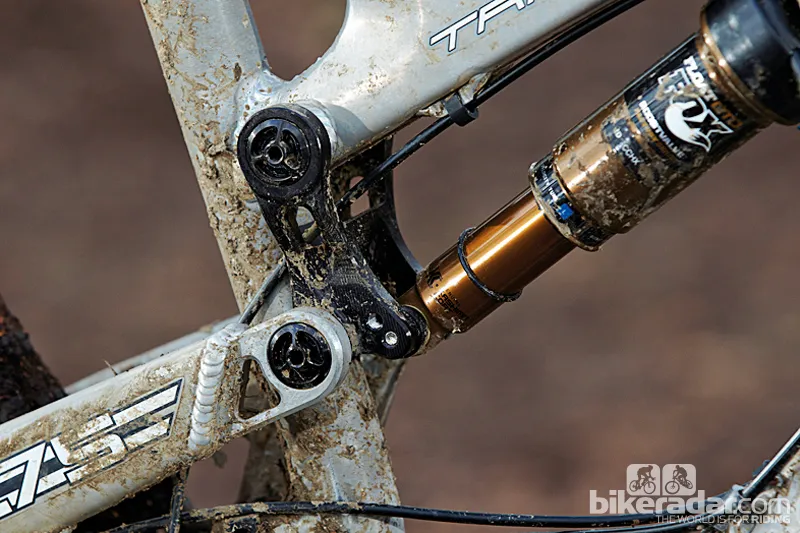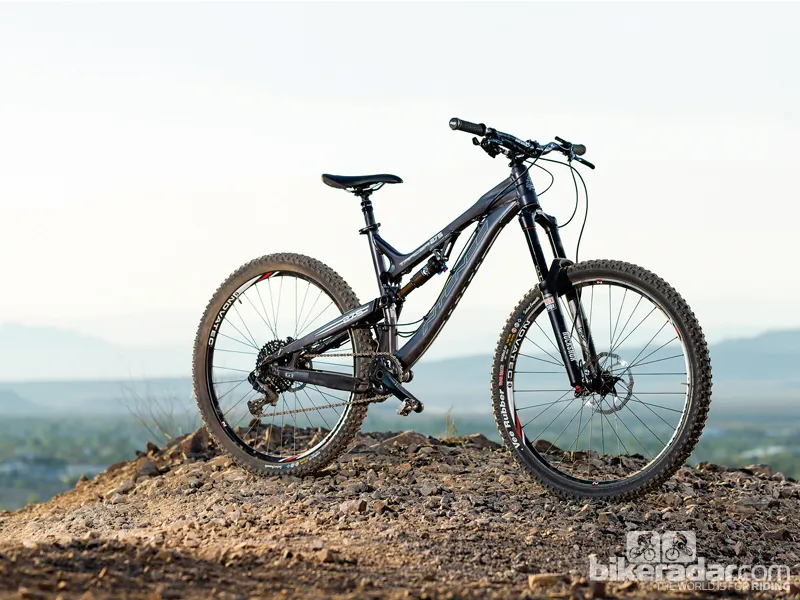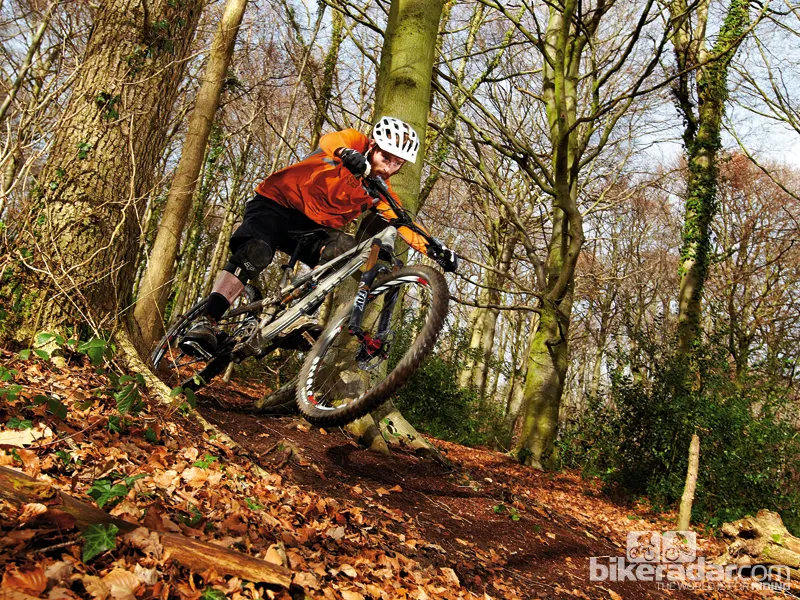You have to hand it to Intense’s Jeff Steber. While everyone else was scratching their heads about whether or not 650B would be the next big thing, he had the Tracer 275 ready to go. Can it live up to the brand’s enviable pedigree?
Intense tracer 275 first look
Video: A first look at the Intense Tracer 275. Note: the spec in the video is different to the full build spec for production models
Ride and handling: up there with the best of the 650B long travel crowd
While Intense shares the VPP2 suspension system with fellow Californian Santa Cruz, it uses it to deliver distinctly different results. The long lower linkage flicks the wheel back a long way as it goes through its stroke, letting the Tracer suck up serious high-speed hits without flinching – so long as you stay off the power.
Because the back wheel goes back and up so dramatically in the first part of the stroke, it amplifies the easy front end lift set up by the seat angle and gives the Tracer great poise when launching drops or manualling.
The tendency to squat under load and braking, allied to the frame’s stiffness, make the Intense seriously good at nailing feet-up drifts and carving berms, despite the lofty bottom bracket.
The flipside of the linkage’s character is very pronounced pedal pull at lower revs and higher torques – it’s enough to make the rear wheel feel egg-shaped on smooth climbs. It also kicks back against your feet very noticeably on big or fast hits, and chokes badly if you try to pedal hard through big debris. Noticeable lower linkage twist also combines with the relatively high frame weight to leave it lagging on climbs.
If you want maximum mainframe stiffness and rock-eating capability, the Tracer 275 should definitely be on your list, but not everyone will like the exaggerated suspension interaction.
The frame offered superb lateral stiffness and responded brilliantly to the slightest mid-corner flick or push. We ended up running the rebound slightly faster to try and recover the rear end more quickly and prevent it from bogging the shock down on bigger hits.
The Intense felt fantastic when it came to straight-lining slippery rocks or popping in and out of ruts at speed, however, and still manualled with ease. The CTD rear shock simplifies damping setup decisions too.
You really do need a dropper post, though, because the kinked seat tube limits how much drop you have with a standard number.

The Fox Float CTD shock is a Kashima-coated bonus
Frame and equipment: careful speccing required
Intense frames are works of art, and the handmade-in-the-USA Tracer 275 is no different. The chunky looks are backed up with travel adjustable between 152mm (6in) and 140mm (5.5in). The G1 dropouts allow you to run pretty much whatever rear axle you want, while a tapered head tube and angular contact bearings help to bolster stiffness.
The handmade quality is shown in the seam-welded monocoque toptube and multiple CNC-machined sections that make up this frame. Check out the Fox rear shock and grease injection points for the DIY-serviceable pivots and it’s easy to see where the ‘high for an alloy bike’ money goes.
As long as you shove your weight forward to compensate for the slack seat angle and rearward centre of gravity, the head angle is slack enough to take most fast and loose descents in its stride and the stout front end can handle a 150 or 160mm fork.
There are also tidy lower-link grease nipples and routing for a RockShox Reverb Stealth dropper post. Plenty of colours are available too.
We had a custom spec number, but a full build with RockShox Revelation fork, SRAM X9 and Avid brakes will cost £3,999/US$4,800.
This article was originally published in Mountain Biking UK magazine, available on Apple Newsstand and Zinio.

